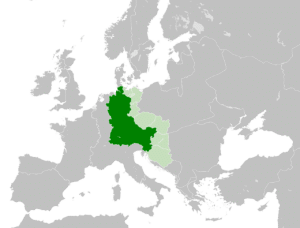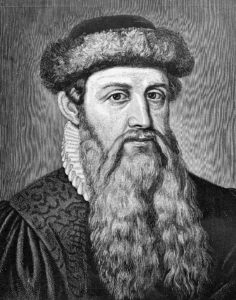The Nebra sky disk, created during the European Bronze Age, is attributed to a German site.
Germanic Tribes and Frankish Empire:
The Germanic tribes are thought to date from the Nordic Bronze Age or the Pre-Roman Iron Age. From southern Scandinavia and north Germany, they expanded south, east and west, coming into contact with the Celtic, Iranian, Baltic, and Slavic tribes.
Under Augustus, Rome began to invade Germania. In 9 AD, three Roman legions were defeated by Arminius. By 100 AD, when Tacitus wrote Germania, Germanic tribes had settled along the Rhine and the Danube (the Limes Germanicus), occupying most of modern Germany. However, Baden Württemberg, southern Bavaria, southern Hesse and the western Rhineland had been incorporated into Roman provinces.
Around 260, Germanic peoples broke into Roman-controlled lands. After the invasion of the Huns in 375, and with the decline of Rome from 395, Germanic tribes moved farther southwest: the Franks established the Frankish Kingdom and pushed east to subjugate Saxony and Bavaria, and areas of what is today eastern Germany were inhabited by Western Slavic tribes.
East Francia and Holy Roman Empire:
Charlemagne founded the Carolingian Empire in 800; it was divided in 843 and the Holy Roman Empire emerged from the eastern portion.

The territory initially known as East Francia stretched from the Rhine in the west to the Elbe River in the east and from the North Sea to the Alps. The Ottonian rulers (919–1024) consolidated several major duchies. In 996 Gregory V became the first German Pope, appointed by his cousin Otto III, whom he shortly after crowned Holy Roman Emperor. The Holy Roman Empire absorbed northern Italy and Burgundy under the Salian emperors (1024–1125), although the emperors lost power through the Investiture controversy.
Under the Hohenstaufen emperors (1138–1254), German princes encouraged German settlement to the south and east (Ostsiedlung). Members of the Hanseatic League, mostly north German towns, prospered in the expansion of trade. Population declined starting with the Great Famine in 1315, followed by the Black Death of 1348–50. The Golden Bull issued in 1356 provided the constitutional structure of the Empire and codified the election of the emperor by seven prince-electors.
Johannes Gutenberg introduced moveable-type printing to Europe, laying the basis for the democratization of knowledge. In 1517, Martin Luther incited the Protestant Reformation; the 1555 Peace of Augsburg tolerated the “Evangelical” faith (Lutheranism), but also decreed that the faith of the prince was to be the faith of his subjects (cuius regio, eius religio). From the Cologne War through the Thirty Years’ Wars (1618–1648), religious conflict devastated German lands and significantly reduced the population.

The Peace of Westphalia ended religious warfare among the Imperial Estates; their mostly German-speaking rulers were able to choose Roman Catholicism, Lutheranism, or the Reformed faith as their official religion. The legal system initiated by a series of Imperial Reforms (approximately 1495–1555) provided for considerable local autonomy and a stronger Imperial Diet. The House of Habsburg held the imperial crown from 1438 until the death of Charles VI in 1740. Following the War of Austrian Succession and the Treaty of Aix-la-Chapelle, Charles VI’s daughter Maria Theresa ruled as Empress Consort when her husband, Francis I, became Emperor.
